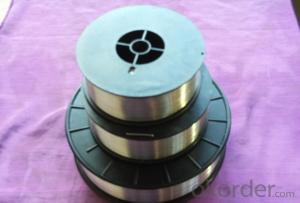Aluminum extrusion profiles are not just a manufacturing process; they represent the future of innovation, sustainability, and versatility in the world of manufacturing. These profiles are created by pushing aluminum alloy through a die to achieve a specific shape or profile, which can then be used in a wide range of applications. Let’s dive into the fascinating world of aluminum extrusion and explore its potential to shape the future of manufacturing.
The Beauty of Aluminum Extrusion
Aluminum extrusion profiles are known for their aesthetic appeal. The process allows for the creation of intricate designs and shapes that can add a touch of elegance to any product. From architectural elements to automotive parts, the possibilities are endless. The smooth surface and shiny finish of extruded aluminum make it a popular choice for designers and engineers alike.
Lightweight and Strong
One of the most significant advantages of aluminum extrusion profiles is their lightweight nature. Aluminum is a lightweight metal, and when extruded into profiles, it maintains its strength while being easier to handle and transport. This is particularly beneficial in industries such as aerospace, automotive, and transportation, where weight reduction can lead to increased fuel efficiency and reduced emissions.
Customization and Flexibility
The extrusion process offers unparalleled customization options. Manufacturers can create profiles with specific dimensions, tolerances, and surface finishes to meet the unique requirements of their products. This level of flexibility allows for the production of bespoke components that can be tailored to the exact needs of a project, ensuring optimal performance and functionality.
Sustainability and Environmental Impact
Aluminum extrusion is an environmentally friendly process. Aluminum is a highly recyclable material, and the extrusion process itself consumes less energy compared to other metalworking processes. This makes aluminum extrusion an attractive option for manufacturers who are committed to reducing their carbon footprint and promoting sustainable practices.
Applications in Various Industries
The versatility of aluminum extrusion profiles knows no bounds. They are used in various industries, including construction, automotive, aerospace, electronics, and furniture. In construction, they are used for window frames, door frames, and structural components. In the automotive industry, they contribute to the manufacturing of lightweight vehicles. Aerospace applications benefit from their strength-to-weight ratio, while the electronics industry utilizes them for heat sinks and casings.
Innovations in Extrusion Technology
As technology advances, so does the aluminum extrusion process. Innovations such as 3D printing and automation are being integrated into the manufacturing process, allowing for more complex and precise profiles to be created. This not only improves the quality of the end product but also increases production efficiency and reduces costs.
The Future of Aluminum Extrusion
The future of aluminum extrusion looks bright. As the demand for lightweight, sustainable, and customizable products grows, so does the need for advanced manufacturing processes like aluminum extrusion. The potential for innovation in this field is immense, and it will continue to drive the evolution of manufacturing across various industries.
Embracing the Change
Manufacturers and designers must embrace the change that aluminum extrusion brings to the table. By leveraging the unique properties of aluminum extrusion profiles, they can create products that are not only functional but also environmentally friendly and aesthetically pleasing. The future of manufacturing lies in our ability to adapt and innovate, and aluminum extrusion is at the forefront of this transformation.
In conclusion, aluminum extrusion profiles are more than just a manufacturing process; they are a symbol of progress and a testament to human ingenuity. As we look to the future, it’s essential to recognize the potential of aluminum extrusion in shaping the way we produce and consume goods. The possibilities are as limitless as our imagination, and the future is bright for this incredible material and process.

